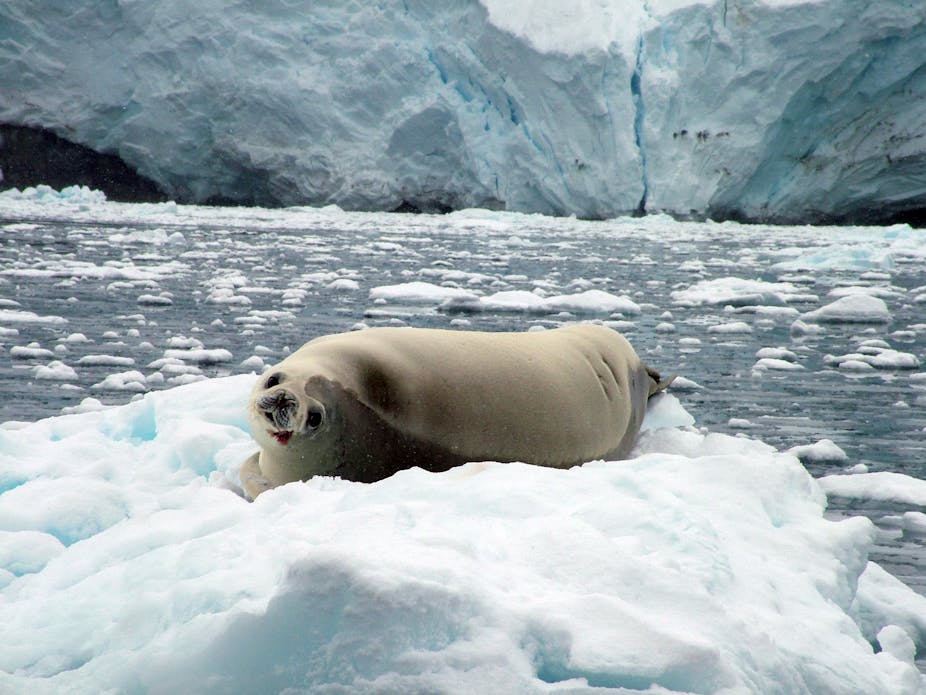Changes in the Antarctic go well beyond the immediate region. They affect the whole planet.
Antarctica and the Southern Ocean and the feedbacks between the ice, oceans and atmosphere play a crucial role in the global climate system.
What have we learned?
It’s almost 100 years since Sir Douglas Mawson left for Antarctica on his epic journey of science and adventure. It’s been 50 years since the Antarctic Treaty set Antarctica aside as a zone of peace and cooperation, dedicated to science.
And it’s three years since the International Polar Year when 60 nations joined together to undertake the biggest ever coordinated research program in the world’s polar regions.
We have learned much about Antarctica over the past 100 years of science and discovery. But it’s only in the past two decades that we have begun to quantify the profound and critical role Antarctica plays in the global climate system.

We now know that the polar regions are changing faster than any other region on earth, most obviously in changes to the amount of snow and ice.
We have begun to quantify how much the melting of the polar ice sheets is contributing to sea-level rise. Recent research indicates that the rate of melting of the polar ice sheets is increasing, and while there is uncertainty about future rates of ice loss, the risk of increased melting is high.
Current ‘conservative’ projections of sea level rise (for example, the IPCC’s projections of between 18cm and 79cm by the end of this century) are indeed conservative. The risk is that they will be exceeded.
Shaping our climate
The Southern Ocean surrounding Antarctica is a major driver of the global climate system.
It connects the world’s ocean basins, it stores heat and carbon, it circulates nutrients and refreshes ocean oxygen levels.
The rate of loss of Antarctic ice sheets will be largely governed by warming of the surrounding ocean. Recent research has shown that the Southern Ocean is becoming warmer, not only at the surface but also at depth.
It is also getting fresher, most likely from increased melting of the ice sheets. The major currents surrounding Antarctica are shifting southward, adding to the amount of ocean heat around Antarctica and possibly having long term consequences for the distribution of Antarctic marine life and ecosystems.

The distribution and seasonality of sea-ice in the Antarctic is also changing, partly due to increases in ocean temperature and partly due to changing wind patterns in the Antarctic.
In the popular media it is often stated that “ice in Antarctica is increasing”. This statement is most accurately applied to the sea-ice (the ice that forms from sea water – not the ice sheet).
But simple statistics can camouflage profound regional changes.
While the extent of sea ice is increasing in the East Antarctic sector, particularly in the Ross Sea south of New Zealand, there have been dramatic changes in sea ice distibution in the West Antarctic around the Antarctic Peninsula. In this region, increases in sea surface temperature are among the highest on the globe.
Capturing carbon, and feeling the effects
The Southern Ocean plays a huge role in capturing carbon. The global oceans absorb 25% of the carbon dioxide we add to the atmosphere each year, and the Southern Ocean stores 40% of this because colder waters are able to absorb more carbon dioxide than warmer waters.
But this free environmental service comes at a cost: the oceans are becoming more acidic, with ramifications for some species at the bottom of the food chain. Some small ocean creatures find it more difficult to create their shells in a more acidic ocean.
There is also some evidence emerging that shows the rate of absorption of carbon dioxide in the Southern Ocean is decreasing.

Ice cores drilled from the great Antarctica ice sheets also provide a unique climate record which tracks changes as far back as 860,000 years. These reveal important detail about global temperatures and the levels of greenhouse gasses in the atmosphere.
Antarctica contains some of the world’s oldest ice, and there is are unique opportunities to take this detailed climate record back further.
A remote resource
The ecosystems of the Antarctic are an ideal place to undertake research which can separate climate change from other environmental impacts because of the relatively low levels of human impacts over a large geographic region.
Despite the past ravages of whaling and sealing, modern regulation of commercial and exploitative activities in the Antarctic (mainly fishing for krill and finfish) provide a relatively stable backdrop against which to understand climate change impacts on ecosystems.
Antarctic science is logistically difficult and expensive and Antarctica is a long way from the great economies of the world.

Collaboration is the keystone of modern Antarctic endeavour. Australia, with its long history of involvement in Antarctic science and logistics, and its sovereign claim to 42% of the Antarctic continent, will play an increasingly significant role in future collaborations to unlock the secrets that Antarctica will reveal.
These efforts are critical to understanding the extent and path of climate change closer to home.

